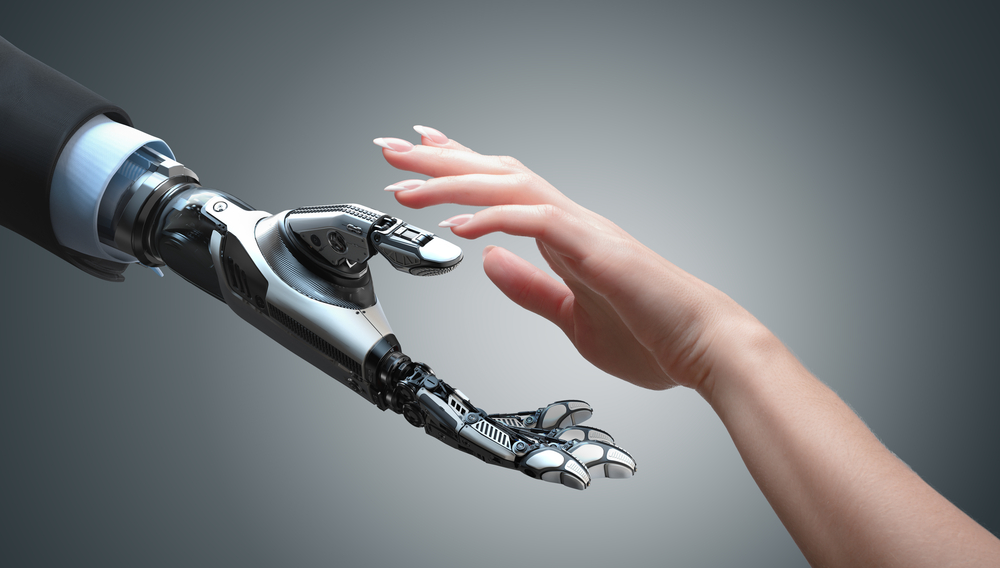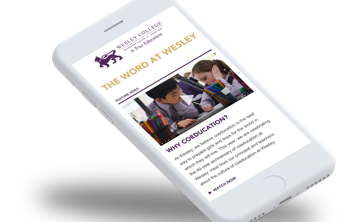
An education for the digital age involves understanding and using technology, but ‘robot proofing’ our students by developing their creativity, flexibility and problem solving skills has never been more important. Morag Howard explains why.
Since Fritz Lang’s Metropolis first screened in 1927, cinema has been obsessed with robots, from mechanical tin machines to biomechanical versions like the replicants of Blade Runner. Robots, it seems, both prompt us to consider what it means to be human and scare us with the fear they’ll take our jobs.
It’s not just in the science-fiction world of cinema that robots push our buttons, though. Robots have long been a reality on the assembly line, taking over repetitive manual work, recently joined by robo-carers and artificial intelligence (AI) capable of everything from medical diagnoses to journalism. Robotics have already replaced much manual work and AI could lead to the atrophy of more complex skills, but reports of the death of the job are greatly exaggerated, according to Matt Simon in Wired.
That’s because, as Stephen Parker, National Education Sector Leader at KPMG Australia, puts it, we humans are much better than robots at the non-routine.
Ensuring students are ‘ready for the non-routine’
Education has a critical role to play in ensuring students are ‘ready for the non-routine,’ says Parker. ‘Our education system needs to place greater focus on skills and capabilities, and correspondingly reduce the “knowledge content” of the typical syllabus,’ he says. Contemporary non-routine skills and capabilities, include:
- complex problem solving
- critical thinking
- creativity
- people management
- collaborating, including collaborating to learn
- emotional intelligence – the ability to manage our own and others’ emotions, and recruit others in pursuit of effective problem-solving
- judgement and decision making
- service orientation – the ability to anticipate, recognise and meet others’ needs, even if those needs are not explicitly expressed
- negotiation, and
- cognitive flexibility – the ability to switch our thinking or behaviour in response to a changing situation, or apply thinking or behaviour from a familiar situation to a novel one.
Just as the industrial revolution changed work patterns, so too has the technological revolution. We are now immersed in a digital and robotic revolution and the potential for this to disrupt our economy is unprecedented. This disruption has been seized upon by critics and naysayers who fear the worst, just as those who experienced the industrial revolution did before them.
Educate to ‘robot proof’
Like Parker, Joseph Aoun, President of Northeastern University and past Chair of the American Council on Education, is more optimistic. Aoun says we educators can ‘robot proof’ our students – and the key is to educate them to invent, create and discover – filling needs that even the most sophisticated robot simply can’t. Consider robo-journalism. The Guardian in January was able to publish its first robotic article – on political donations – because its AI author, ‘ReporterMate,’ was able to crunch the data to analyse and identify patterns. According to IBM Watson Chief Customer Officer Jodie Sangster, ‘AI can correlate information, put trends together and understand what they are. It can also understand how to compose a sentence because you teach it how to compose a sentence.’ What it can’t do is intuit, think creatively, feel.
That’s a point endorsed by Mylan Vu, managing director of global communications agency, Hotwire, who thinks the role of robo-journalism is to support rather than replace humans in the workplace. ‘I watched Waleed Aly interviewing the New Zealand PM (Jacinda Ardern) about the Christchurch attacks,’ Vu says. ‘And it was so incredibly moving. Why? Well, because his first question was, “How are you?” and you could see the pain and sorrow on her face. A robot can’t evoke that – you can’t teach AI to ask somebody how they’re coping after a terrorist attack.’
Nurturing cognitive capabilities
The point Aoun makes in Robot-Proof: Higher education in the age of artificial intelligence, though, is that the objective for us humans is not simply that we be left to do the things that robots and AI can’t, but that we harness robotics and AI to work for us so that we can do what we do best: invent, create and discover. To do this requires significant curriculum change. Where we once taught the classics, logic and factual subjects, contemporary education must now equip our students with the tools to thrive in an age where machines, software and AI will perform many of the tasks we might have once prepared them for. This is not to say there is no place for the curriculum of old; of course there is, but it needs to be augmented to prepare students to remain lifelong learners and viable participants in the future workforce.
For Aoun, a creative mindset and the flexibility to invent, discover or produce something that is both original and valuable to society – and also not prone to automation – will become priceless. The use of cognitive capabilities such as systems thinking (making connections by viewing things holistically), entrepreneurship (applying creativity to an economic sphere), cultural agility (viewing situations through varied lenses) and critical thinking are much more likely to develop creativity in our students than simply presenting them with content.
The future of learning at Wesley
Our challenge is to nurture our students’ cognitive capabilities and resultant creativity. How do we do this at Wesley? Our Inspire Lab in the Junior School, our science clubs in Middle School, our entrepreneurship programs and interdisciplinary units in the Primary Years Program (PYP) and Middle Years Program (MYP), approached through a STEM lens, are some of the many ways we provide our students with avenues to extend their creativity.
As David Edwards, Head of Campus at St Kilda Road, explains in ‘The importance of STEM at Wesley College,’ the rich framework of both the PYP and MYP challenges our students with information and ideas across local, national and global contexts, and stimulates them not only to be problem solvers but also problem posers. A good example of that is a program at the Formula One Grand Prix in March, attended by our Year 8 students, who investigated ideas for developing new modes of transport to make our city more liveable and sustainable into the future. Our senior students are challenged through a huge array of subjects in both the Victorian Certificate of Education and the International Baccalaureate Diploma Program, and the possibilities for extension through participating in VET and university programs.
For Aoun, the curriculum we need – he calls it humanics – is one that prepares students for a world in which human professionals work with AI and robots, and – in the words of Australia’s Chief Scientist Alan Finkel at Wesley’s 2018 Samuel Alexander Lecture – ‘play nice, and get along’.
An education for the digital age needs to focus on the capabilities of technology, but it must also focus on what technology does not have the capacity to do (yet) – and that is our incredible capacity for creativity and flexibility.
Morag Howard is Deputy Head of Wesley’s St Kilda Road Campus.
